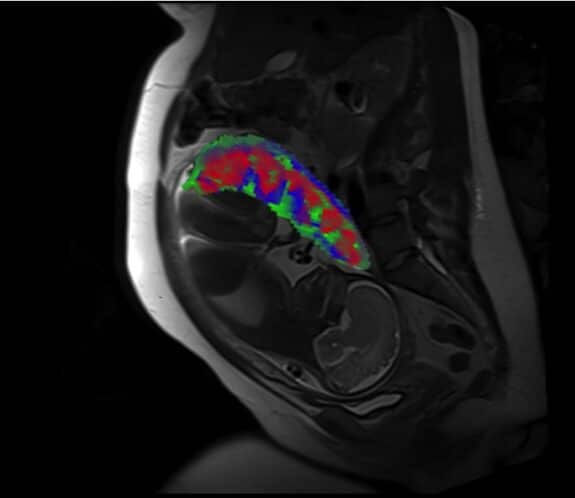The placenta is an incredible organ that is essential for a healthy, successful pregnancy. During pregnancy, it serves as a bridge between the mother and unborn baby, providing both nutrition and oxygen to the baby while filtering harmful substances and regulating body temperature. For the mom, the placenta produces hormones such as estrogen and progesterone which help maintain a healthy pregnancy by controlling fetal development as well as aiding in the preparation of her uterine lining for childbirth.
During pregnancy, placenta complications can be dangerous for both mother and baby. Ensuring placental health is important for the safety of your baby’s growth.
A new study, funded by the National Institutes of Health (NIH,) has resulted in a new method to examine MRI scans and identify structural compartments of the placenta as well as measure oxygen levels and determine if there are malformations in blood vessels (i.e., placental lesions). With this new technology, researchers can analyze MRI data with unprecedented accuracy, an achievement previously unattainable through traditional means. Conducted under NIH’s Human Placenta Project, spearheaded by NICHD, this is the first of its kind in terms of offering an innovative approach to placenta research that opens up exciting doors for a better understanding of fetal development and potential risks.

MRI scan showing the fetus and placental compartments—intervillous space (red), placental vessels (green), and placental tissue (blue).Wang Lab, Washington University in St. Louis
Developing accurate methods for analyzing MRI scans is a major accomplishment for the study team led by Yong Wang and Alison Cahill. Their machine learning method enables the visualization of placental components-including intervillous space, vessels, and tissue-without the need for contrast agents. This innovation offers healthcare practitioners a more effective option to diagnose and treat some conditions that occur during pregnancy. Moreover, doctors can now use such MRIs to monitor fetal growth in greater detail than ever before.
This technique is a far cry from current MRI analysis methods which only allow for measuring the average oxygen levels across the entire organ. By recording region-specific measurements, the study team was able to observe potential markers for pregnancy complications. While promising results were obtained, further testing is required on large groups of participants to gain deeper insight.







